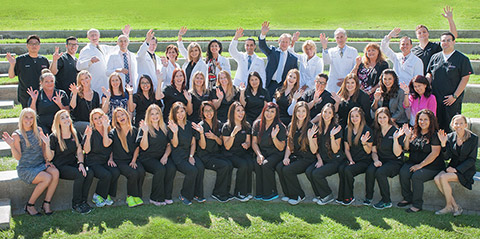
Back to School Vaccines by Your Marque Team
 As we approach the beginning of a new school year, we must consider California’s law requiring all students to show proof of certain vaccinations before enrolling in classes. This law applies to students of all ages from preschool to college. Immunization requirements are intended to reduce the risk of spreading vaccine-preventable diseases.
As we approach the beginning of a new school year, we must consider California’s law requiring all students to show proof of certain vaccinations before enrolling in classes. This law applies to students of all ages from preschool to college. Immunization requirements are intended to reduce the risk of spreading vaccine-preventable diseases.
By the definition, a vaccine is a suspension of organisms or a fraction of organisms used to induce immunity. There are two types of vaccines:
- Attenuated vaccines which contain live organisms that are less virulent.
- Inactivated vaccines which contain either inactive microbe, toxin, or a few proteins from the pathogen.
Most vaccines have to be given multiple times in order to be fully effective, and some of them have to be repeated periodically. Based on statistics, since vaccines have become available, the spread of different diseases has dropped significantly. By vaccinating your children, you not only protect them from life-threatening illnesses but you also protect your whole family and friends.
The majority of vaccines are administered to newborn babies within the first two years of their life, in order to build up their immunity. By the time your child starts preschool he or she should receive:
- 4 doses of DTaP. This vaccine protects from three different bacteria: tetanus, diphtheria, and pertussis. Each of them can lead to very serious diseases or even death. Tetanus enters the body through cuts or broken skin and causes severe muscle pain and “locking” of the jaw. The other two bacteria are airborne, spread by coughing or sneezing. Since the vaccine has been available, according to the CDC, the spread of bacteria dropped as much as 90%. However, just last year more than 48,000 Americans suffered from whooping cough, caused by pertussis because they did not receive the vaccine.
- 3 doses of Hepatitis B vaccine, given within a 6-month period. This vaccine protects from liver disease caused by the Hepatitis B virus. The number of individuals suffering from Hepatitis B disease drastically decreased since 1990, when the vaccine began being routinely administered to children.
- 2 doses of MMR. Measles, mumps and rubella (MMR) are airborne viruses that can cause rash, headache, muscle pain and may lead to seizures, brain damage or even death. All three diseases were very common among children before the vaccine became available in 1968.
- 3 doses of Polio. This disease was very common before 1955, when Polio vaccine was introduced to the public. It is spread by direct contact with an infected person, and causes paralysis leading to permanent disability or death.
- 1 dose of Varicella. This vaccine protects from chickenpox and it was approved for administration in 1995.
- 3 doses of Hib (Haemophilus Influenzae type B) vaccine, which prevents meningitis, pneumonia, and throat infections.
Before you enroll your child in kindergarten, in addition to the vaccines listed above, he or she will need another dose of DTaP and Polio.
Middle school students must receive:
- Tdap vaccine. This vaccine was approved for administration in 2005, in place of TD (Tetanus and Diphtheria). Children have to be vaccinated before they enter seventh grade because by this time the immunity that was induced by DTaP in earlier years has worn off. In fact, Tdap and TD vaccines should be repeated every 10 years to be fully effective. Tdap should be also given to the individuals who work with children or have contact with newborn babies.
- HPV vaccination, also known as Gardasil, is another recommended vaccine for middle school children, however, not required. According to the CDC, more than half of men and women in the United States, who are sexually active, have been infected with HPV – human papillomavirus. For the most part, the virus does not cause many severe symptoms and can self-resolve. However, it may lead to cervical cancer in women and throat cancer in both men and women. Therefore, in order to prevent those types of cancers, individuals should be given the HPV vaccine. The effectiveness of HPV immunization is much higher when administered at a younger age, before any sexual activity takes place. It is offered in three doses administered within a 6-month period.
- Meningococcal vaccine is also recommended for middle school students. It protects against meningitis which is an infection of the brain and spinal cord.
College students are required to show they have immunity to hepatitis B, MMR, and varicella (chickenpox). If immunization records from previous years are not available, a simple blood test can be ordered by the physician to check the levels for each of these vaccines. Also, students have to be up to date with the Tdap vaccine (it is good for 10 years), and they should receive a meningococcal booster.
should receive a meningococcal booster.
In addition to the above mentioned immunizations, every child and adult should be given the flu vaccine annually. This vaccine protects against influenza virus which is very contagious. It is spread by coughing and sneezing. The most common symptoms are: high fever, tachycardia (elevated heart rate), cough, and muscle aches, which usually go away on its own within few days. However, sometimes flu can turn into very severe illnesses, especially among patients with compromised immunity, or other health problems.
The information provided is for general interest only and should not be misconstrued as a diagnosis, prognosis or treatment recommendation. This information does not in any way constitute the practice of medicine, or any other health care profession. Readers are directed to consult their health care provider regarding their specific health situation. Marque Medical is not liable for any action taken by a reader based upon this information.
